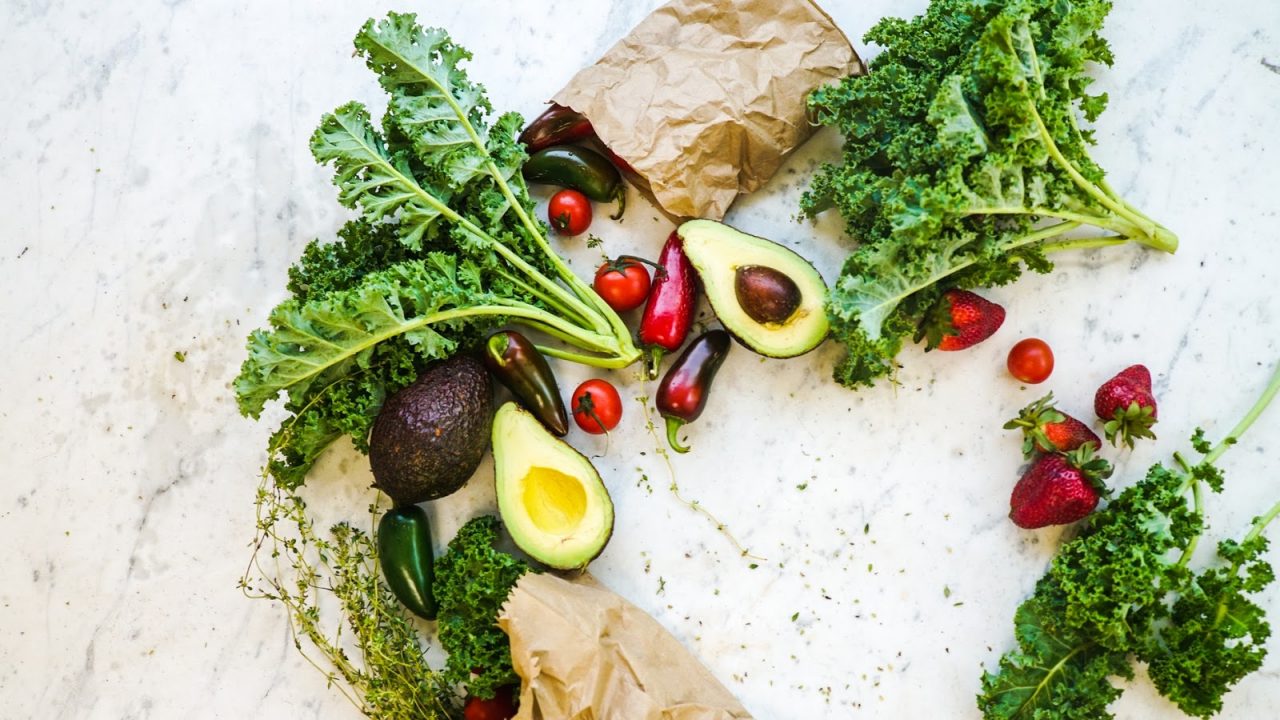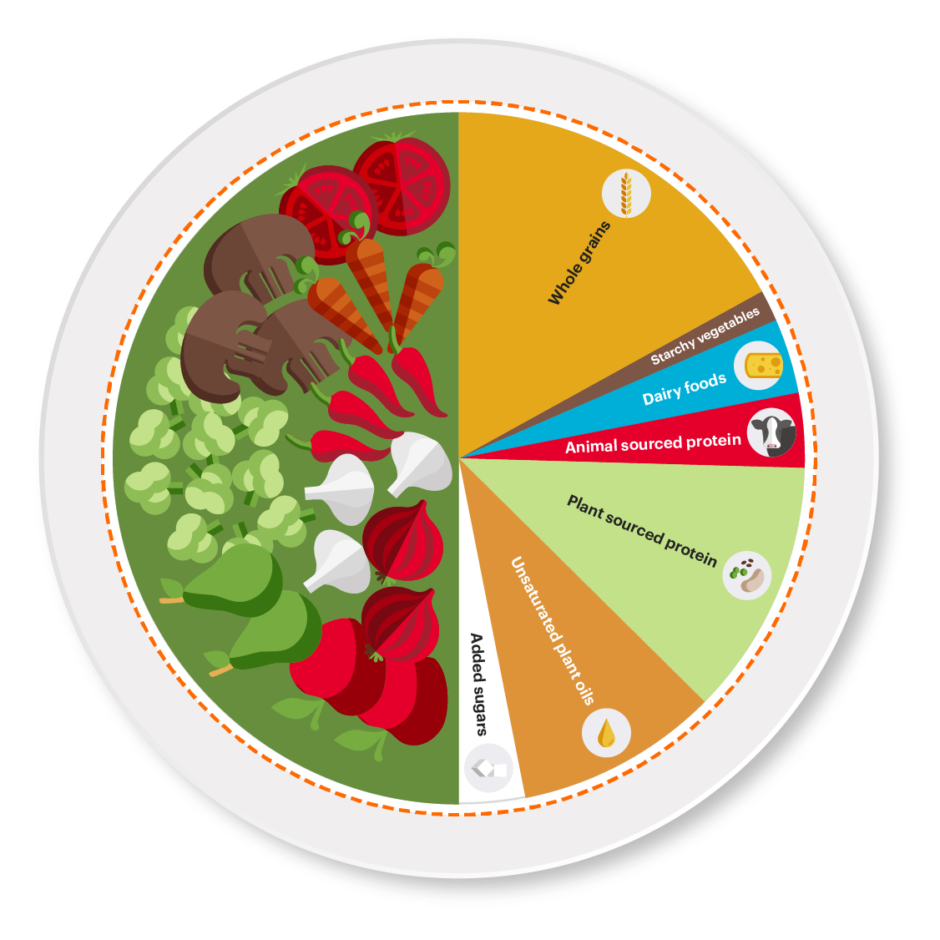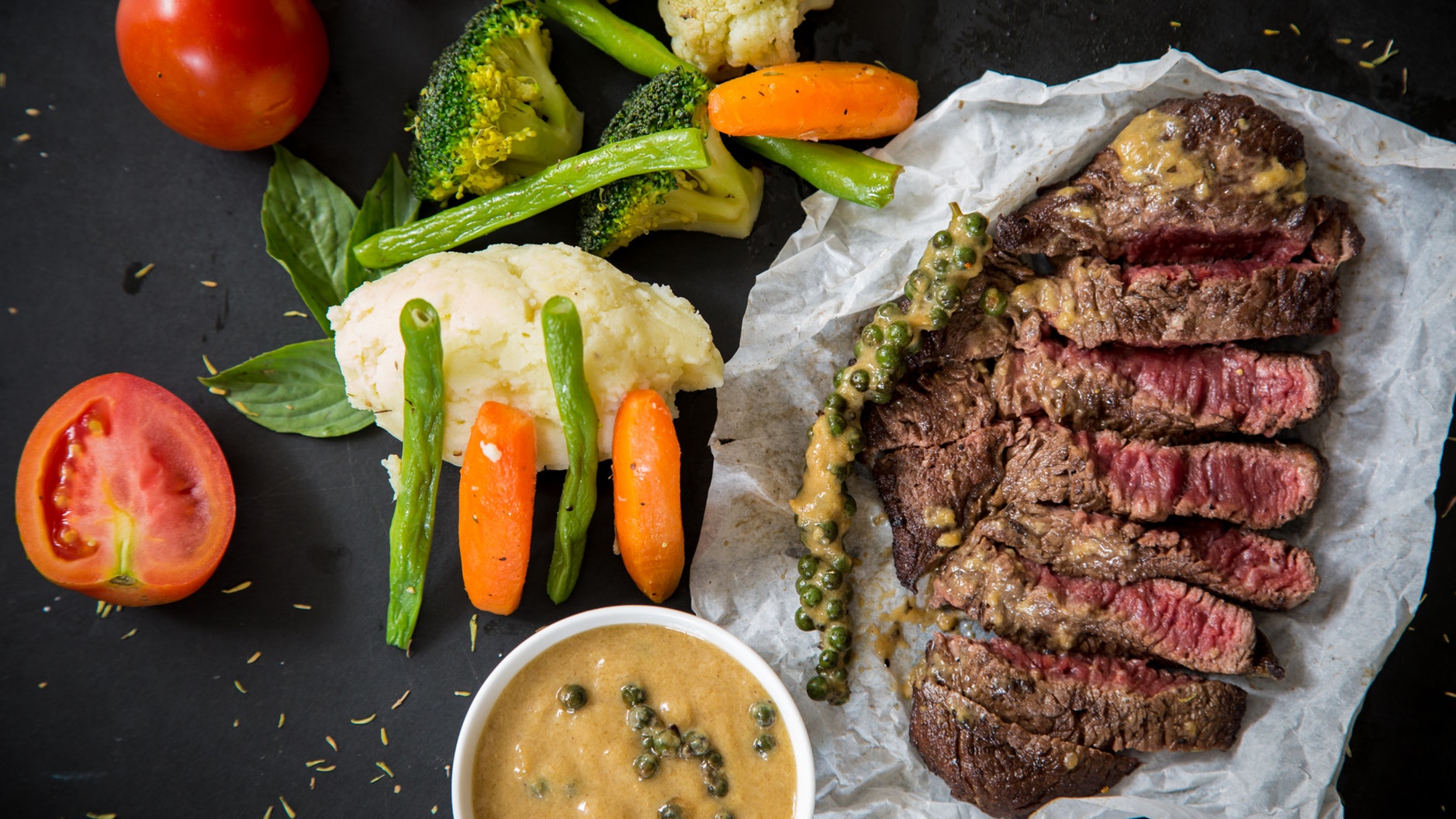The Planetary Health Diet is a science-based diet that is good for both human health and planetary health. It is designed by an international commission that seeks to address the looming problem of sufficiently feeding an exponentially growing global population and how the farming industry contributes to the destruction of wildlife, pollution of rivers and oceans, and climate change.

A Sustainable and Plant-Focused Diet
The Planetary Health Diet is sustainable in more ways than one. It will significantly reduce the consumption and production of meat and sugar and, therefore, lessen the negative impacts of industrial agriculture on the environment. At the same time, it will create a more sustainable food supply that will be able to feed the whole global population and prevent the deaths of millions worldwide caused by unhealthy food or hunger.
Industrial agriculture is one of the biggest contributors to global warming, environmental pollution, and habitat destruction. The modern diet, which is mostly made up of fatty and processed meats and other processed products derived from livestock, is the leading cause of diseases worldwide. The unsustainable food supply and unequal distribution of food are also the cause of hunger and malnourishment of billions of people.
Indeed, a huge part of humanity’s impact on the planet comes from the way we eat.

How Does the Planetary Health Diet Work?
The Planetary Health Diet puts great emphasis on plant foods. On an average of 2,500 calories per day, half of the diet should be made up of fruits and vegetables; the other half is composed of whole grains, plant proteins (pulses and nuts), small amounts of meat and dairy, and a sprinkling of starchy vegetables and added sugars.

The Planetary Health Diet is not about the elimination of certain food groups, but about adopting a healthy and sustainable way of eating that is also enjoyable. It is fairly flexible, allowing for personal preferences, dietary needs, and cultural norms. The vegetarian and vegan diets qualify as a type of Planetary Health Diet. This diet is also similar to the Mediterranean or Okinawa diet, both of which are traditionally healthy diets.
Sample Planetary Health Diet Recipes
The following sample recipes are from EAT’s one-week dinner menu created for EAT-Lancet’s Planetary Health Diet.
Creamy & Wholesome “Risotto” by chef Lise Finckenhagen

Barleyotto
300 ml pearl barley, soaked for at least 3 hours
1 shallot
2 tbsp olive oil
100 ml apple juice
500 ml vegetable stock
100 ml parmesan cheese, grated
100 ml fresh herbs, chopped (such as parsley, chives and basil)
A few drops of lemon juice
Salt and ground pepper
3 tbsp hazelnuts, chopped and roasted
3 tbsp pumpkin seeds, roasted
Roasted root vegetables
3 beetroot
4 carrots
1 small celeriac
2 cloves of garlic
1 tbsp lemon juice
1 tsp honey
2 tbsp olive oil
Salt and ground pepper
Instructions
Wash all root vegetables, and cut into evenly sized pieces. Mix together the vegetables, crushed garlic, lemon juice, honey, olive oil, and salt and pepper. Spread out the mixture on a baking tray/oven-proof dish lined with grease paper, and roast at 200 degrees for 40 minutes, or until tender. Turn the vegetables a few times to cook evenly.
Fry the finely chopped shallot in olive oil until transparent, then stir in the pearl barley. Add the apple juice and chicken stock and let it simmer for about 40 minutes, or until the pearl barley is soft and most of the liquid has evaporated; stir occasionally. Add the cheese and herbs, and season with a few drops of lemon juice, salt, and pepper.
Place the pearl barley on plates and top with the roasted vegetables. Sprinkle on top with the roasted hazelnuts and pumpkin seeds.
Cauliflower Chili Con Carne by chef Lise Finckenhagen

300 g brown beans, cooked
400 g chuck steak (or extra brown beans if you want the plant-based version “Chili Sin Carne”).
1 large onion
1 red pepper
1 green pepper
400 g plum tomatoes
2 cloves of garlic
1 red chili
1 tsp ground coriander
1 small cinnamon stick
2 tsp ground cumin
2 tsp paprika
2 tsp chili powder
2 tbsp tomato purée
1 tbsp brown sugar or liquid honey
300 ml beef stock/broth
2 tbsp dark chocolate (at least 70%), grated
1 cauliflower
4 tbsp rapeseed oil or mild olive oil for frying
Salt and ground pepper
Natural yoghurt or sour cream
Chopped fresh parsley and/or coriander
Instructions
Cut the meat into small pieces. Peel and chop the onion and the peppers into even-size pieces. Chop the tomatoes. Thinly slice the chili and garlic.
In a thin-bottomed pan with 2 tablespoons of oil, fry the onion, chili, and garlic. Add the dried herbs and the meat. Fry until the meat has browned.
Stir in tomato purée and add tomatoes, paprika, stock/broth, sugar, and a pinch of salt. Bring to the boil, cover with a lid, and let it simmer for an hour, stirring occasionally. Remove the lid and let it simmer for another half an hour, or until the meat is really tender. Season with salt and pepper.
Rinse the beans and stir them into the mixture about 5 minutes before cooking is done. Grate the chocolate and stir it in right at the end.
Wash and break the cauliflower into rough pieces and blend in a food processor until it resembles rice grains. In a large frying pan with 2 tablespoons of oil, fry the cauliflower rice for 3-4 minutes, stirring regularly. Season with salt and pepper. Top with the chili con carne and serve.
The Planetary Health Diet – Final Thoughts
This diet is being promoted as the “optimal diet for people and the planet.” For many countries, particularly in the western hemisphere, the Planetary Health Diet means a drastic reduction in the consumption of meat and dairy products. As a plant-focused diet, it resembles a number of traditional diets from other cultures that have been known to be among the healthiest in the world.
Adopting the Planetary Health Diet requires a radical change in the global food system and how a big fraction of the global population eats. It seeks to balance planetary resources to be able to feed everyone on the planet a healthy diet and to lessen the impact of human activities on the environment.



